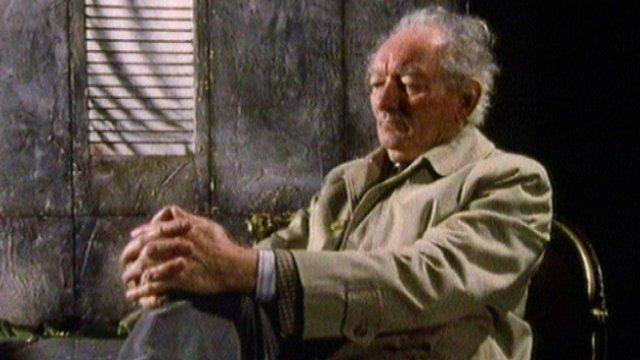Brian Friel: Queen's exhibition recognises playwright's life and work
- Published

The notes show the thinking process and decision making behind Friel's plays
The late Brian Friel rarely sought the limelight, preferring his plays to get all the attention.
And they did, from his first Broadway hit with Philadelphia Here I Come! to the multi-award winning Dancing at Lughnasa.
The Holywood superstar Meryl Streep, who played Kate in the film of Dancing at Lughnasa, even travelled to Donegal in 1998 to meet the writer.
But it might reassure anyone who has ever tried penning drama, poetry or fiction that Friel could sometimes struggle to put words on the page too.
That is evident in a new exhibition of his notes and drafts for five iconic plays which opens at Queen's University's McClay Library on Saturday.
His notes when writing Philadelphia, Here I Come!, The Freedom of the City, Faith Healer, Translations, and Dancing at Lughnasa show numerous ideas, corrections and sometimes complete changes of direction.
"There are times when he asks himself what direction he's going with the play," according to Dr Conor McCafferty from Queen's University.
"Is this the theme that he wants to really write about? Is this what he wants to explore?
"There are really shocking moments almost where he says "I just feel completely lost and I don't know if I'll be able to complete this work"."
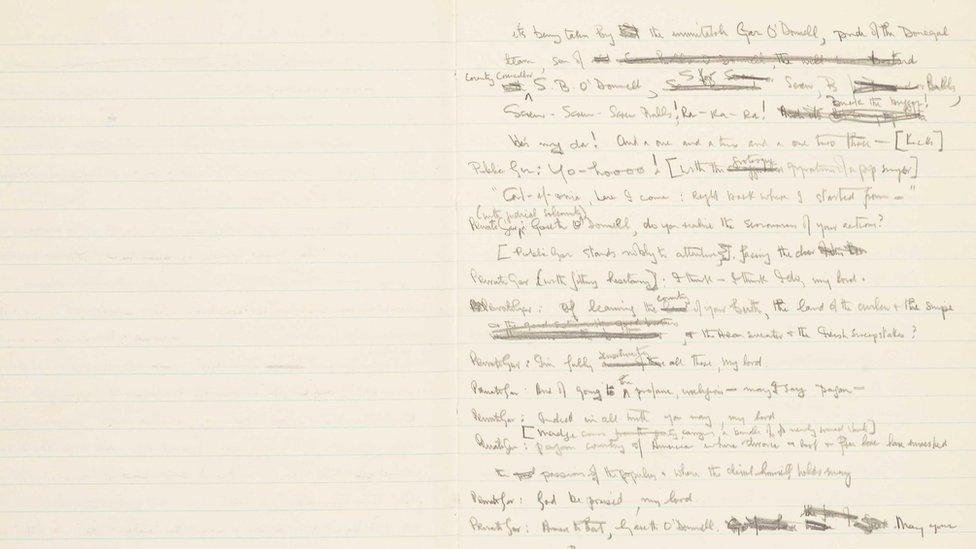
Philadelpia Here I Come! notes from Brian Friel's first Broadway hit
Dr McCafferty said the notes revealed him going through an in-depth creative process, always questioning and seeking to bring his works to life in the best form.
Friel was born in Killyclogher, County Tyrone, in 1929 but moved to Londonderry when he was 10 and grew up there.
Influence of Bloody Sunday
Events in Derry when he was in the middle of writing The Freedom of the City in the early 1970s changed the play.
"Friel originally was working on a civil rights play but over time with Bloody Sunday happening in 1972 that influenced the final form of that play," said Dr McCafferty.
"In the exhibition we've picked out key creative moments which influenced how the plays turned out."
Friel's first major hit was 1964's Philadelphia, Here I Come! the first of many set in the fictional Donegal town of Ballybeg.
Portraying a young man on the cusp of emigrating, it opened in Dublin but later stormed Broadway.
Prof Kelly Matthews from Framingham State University in Massachusetts in the United States said it was still read widely by students in the US today.
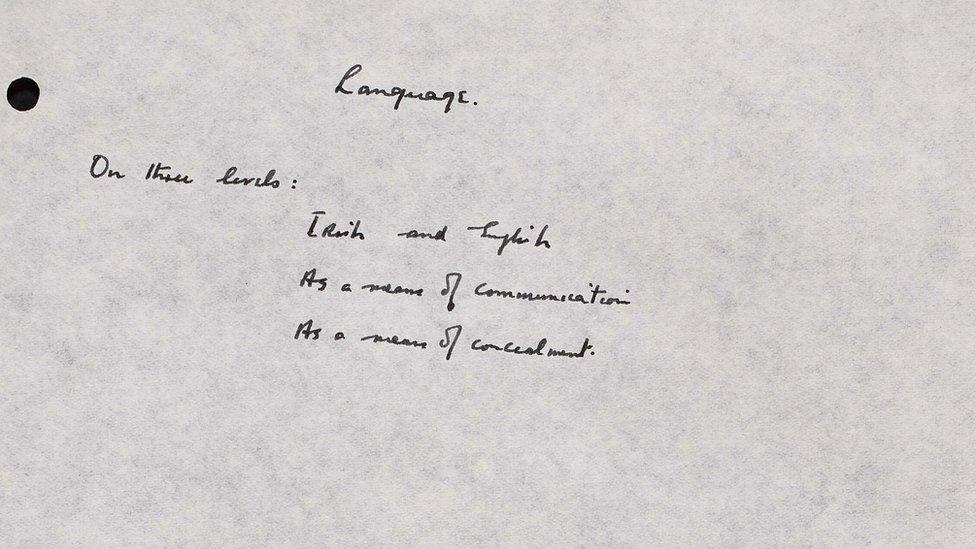
Brian Friel's notes from Translations
"When American students in particular read Friel they see him with fresh eyes and they see for example in Philadelphia this turmoil about leaving home," she said.
"The young man who needs to break free from his father and move to the United States to start a new future - that's a really universal story."
Philadelphia, Here I Come! also went through a number of changes and versions while Friel was writing it, according to Prof Matthews.
"It's really exciting to see that he actually wrote three different beginnings for the play and two different endings," she said.
"And he then asked for advice from other readers before he decided how he would actually carry out the staging when it was performed.
"It was a huge success. It ran for over a year on Broadway and then travelled the United States for six months in a touring production.
"It really made Friel's name as the voice of a new generation from Ireland."
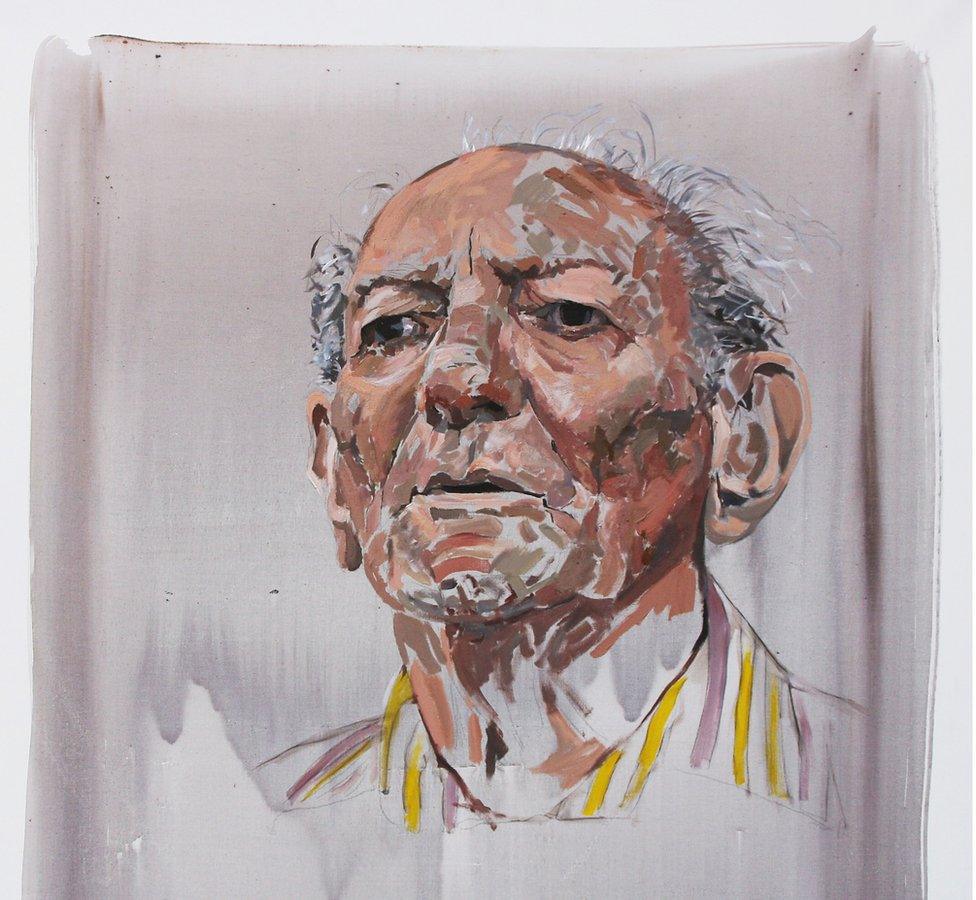
The exhibition will be on display at Queen's University McClay library
Friel died in 2015, aged 86.
The 'Friel Reimagined' exhibition opens at the McClay Library at Queen's University on Saturday 10 December and runs until March 2023.
Almost 3,000 manuscript pages of Friel's work held at the National Library of Ireland in Dublin are also being made available online on the Friel Reimagined website, external.
Related topics
- Published2 October 2015
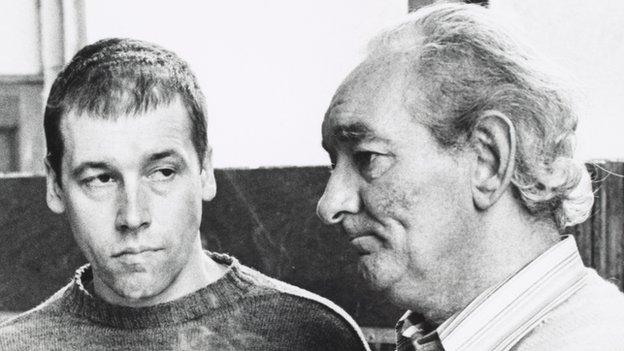
- Published2 October 2015
